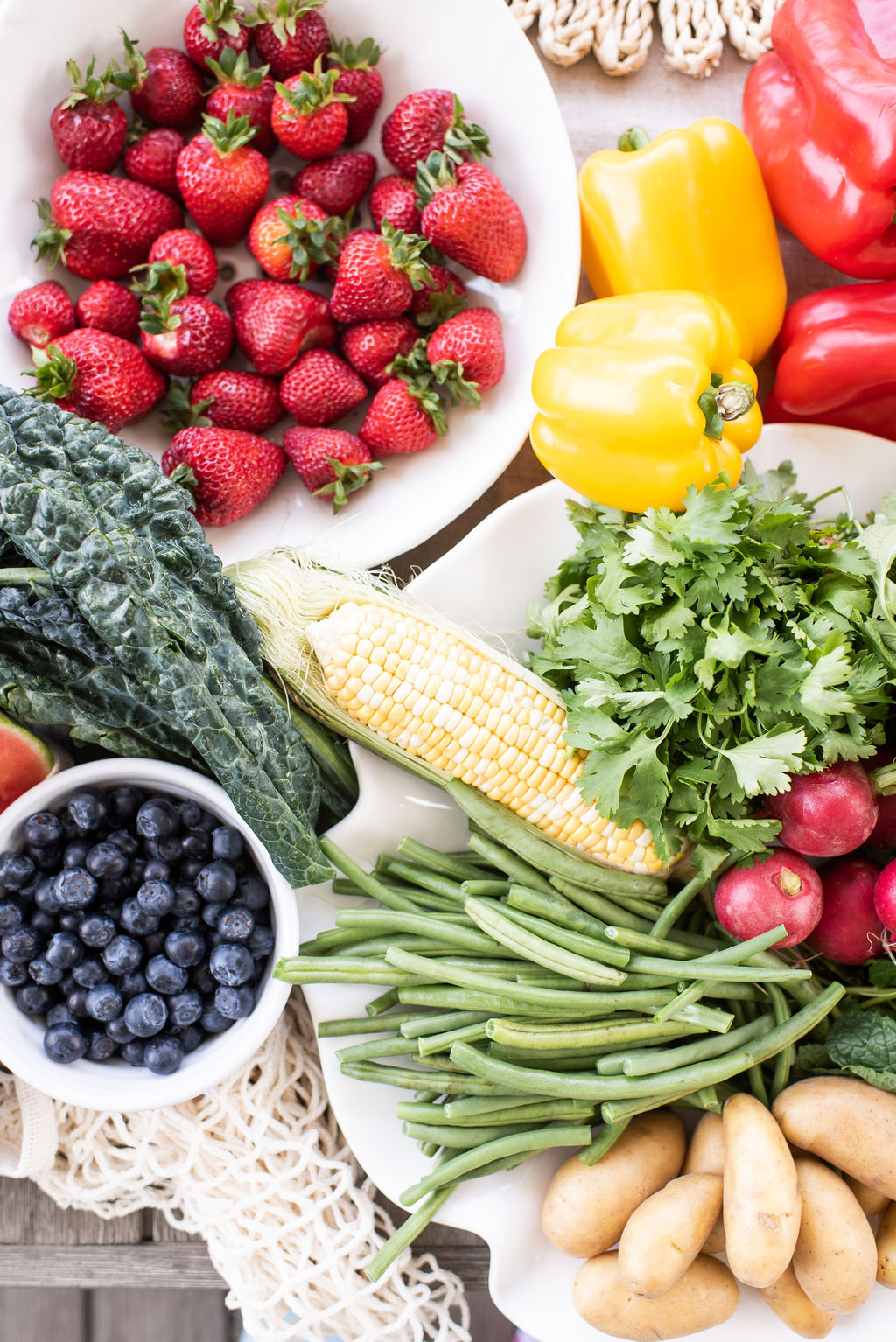The Real Food Fridge


“Eat Food, Not too much, mostly plants.” – Michael Pollan
Vegan, vegetarian, plant-based, plant-forward, pescatarian, flexitarian, keto, paleo; the labels describing the type of diet we should or should not be eating these days is never-ending. Often resulting in confusion, shaming, and guilt are unfortunately a large part of our diet and nutrition culture.
I believe the only way to truly nourish your body is to focus on this basic philosophy of pay more attention to the quality of your food. I recommend focusing on eating good quality, organic, whole, real foods. Listen to your body and apply the principle of not too much, not too little, and just enough of the right stuff.
In case you haven’t heard, plants are cool. Eating plants is cost-effective. They are delicious, great for digestion, food for the planet, and above all, keep you fit and healthy. Eating a plant-based diet involves a focus on eating a variety of whole grains, oats, vegetables, fruit, nuts, seeds, and legumes. I like to eat a little bit of everything, but over the past five years have been making a more conscious effort to eat more plants and less animal foods. Research shows that a plant-based diet is healthier and better for our planet. The fastest food in the world is raw food; therefore, some of the most affordable and straightforward meals centre on raw, natural food. A salad can be chopped and made into a protein-rich meal by merely adding delicious and nutrient dense, plant-based toppings such as hemp seeds, pepitas, or garbanzo beans.
When we’re talking about whole real food, what we mean is food in its most natural state – fruit, vegetables, whole grains, nuts, seeds and legumes. And if you choose to include them: dairy, and sustainably sourced meat, poultry, and seafood.
When I think about fuelling my body, I think about a quote from famous food author, journalist, and activist, Michael Pollan.
“If it came from a plant, eat it; if it was made in a plant, don’t.”
When we consume processed foods made in factories and laboratories, our bodies don’t recognize these substances as nourishment. When it comes to processed foods, the preservatives, artificial sweeteners, fake colours and numerous other food like substances in these products are foreign and classified as toxic by the body. These processed foods place a severe burden on the often already overworked digestive and detoxification system. And unfortunately, I have news for you. Just because a food product says it’s “natural” or “healthy,” or even “vegan,” if it’s in a package, you need to really understand what’s in the product.
When grocery shopping, shop the perimeter of the store where the majority of the fresh, whole, real food is found. You may only need to venture down the aisles once a moth in order to restock some of your flours, oats, canned and dried foods like rice or pasta. I also encourage you to be wary of the packaged “health” foods that can be very deceiving as they get labelled as “natural,” “organic,” “vegetarian,” and “vegan” because often these packaged foods are filled with unhealthy and unnecessary ingredients.
Check the ingredients listings so you really know what you’re buying. Frozen peas, yes. Frozen stir-fry, maybe not? Likely that the stir-fry has loads of added oils, sugars, and preservatives that is something you could prepare at home in under 30 minutes, and turns into something that is less than the label implies. Some of these compounds are too toxic for the body to eliminate. Instead, they get packaged up safely into bundles that are stored in the fatty tissue deposits for safe-keeping until the body has time and energy to deal with them.
When and how my food is grown is important to me. That’s why I’m such a fan of visiting my local farmers market. I love supporting my local community and talking directly to the farmers who grow and raise my food. Purchasing local produce also ensures I get the freshest, healthiest, and most delicious produce available.
I believe that it’s one of the best ways to reconnect with the farms where food comes from. When food is picked close to home, it’s in its most ripe and nutrient-dense state, while food purchased from overseas has traveled hundreds, if not thousands of miles, to get to the store. Often times it needs to be picked unrip and sprayed with chemicals to help speed up ripening. This results in produce that is not as its peak nutrition and creates an unsustainable process for our planet.
While local often means organic, it isn’t always so. It’s also important to remember that a farm may use organic farming practices without being certified organic. This is often the case with small farms that don’t have the budget to seek official certifications. Another critical component of organic farming is the banning of GMO or genetically modified organisms. GMO crops have been genetically modified using DNA from other species to make the plants more resilient to pests, disease, and drought, as well as boosting yield. However, if you are not able to buy organic…
Taking time to cook real, nourishing food is an investment in your family’s future. When you prepare your own food, you know what’s going into it and is a big step towards overall health. Whole, real, fresh food is a vital component of a healthy lifestyle. Fill your plate with whole grains, nuts and seeds, vegetables, legumes, fruit and quality protein, and you have just made one step closer towards a healthier you with no label attached!
xo, Karlene